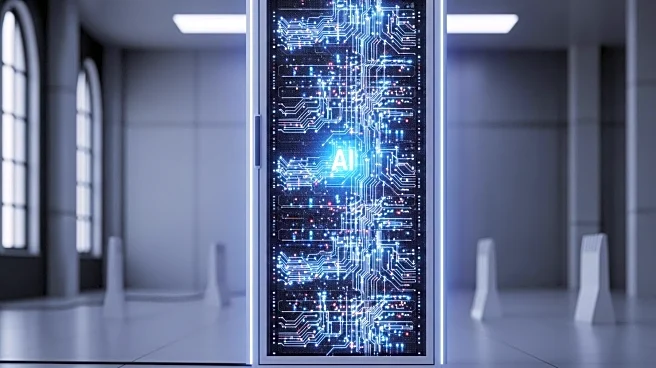What is the story about?
What's Happening?
The emergence of AI-generated ransomware is reshaping the landscape of cyber extortion, presenting new challenges for law firms and their clients. Criminal groups are increasingly utilizing generative AI to develop sophisticated ransomware tools, reducing the need for deep technical expertise. This shift allows attackers to automate campaigns and craft malware with minimal effort, posing significant legal, operational, and reputational risks. The barrier to entry for ransomware attacks is collapsing, enabling individuals with limited expertise to launch attacks rapidly. This development is not merely theoretical; it is already impacting the legal sector, where attribution, regulation, and contract provisions are being tested by AI-driven threats.
Why It's Important?
The rise of AI-generated ransomware has profound implications for U.S. industries, particularly the legal and cybersecurity sectors. As AI lowers the barrier to entry for cybercriminals, law firms must adapt their risk management strategies to address these evolving threats. The legal implications are significant, with potential disputes arising over contract terms, liability, and compliance obligations. Firms that fail to anticipate AI-driven ransomware may face increased scrutiny from regulators and plaintiffs, who could argue a duty to prepare for such threats. This development underscores the need for proactive measures, including stress-testing incident response plans and auditing contracts to account for AI-generated attacks.
What's Next?
Law firms and their clients are advised to update their risk perspectives and prepare for the arrival of AI-generated ransomware. This includes revisiting liability provisions in tech agreements, incorporating AI scenarios into tabletop exercises, and demanding transparency from vendors using AI in their systems. As AI threats continue to evolve, lawmakers are expected to respond with tighter reporting requirements and shifts in liability. Firms should monitor these regulatory changes closely to ensure compliance and mitigate potential legal challenges.
Beyond the Headlines
The ethical and legal dimensions of AI-generated ransomware are complex, with questions surrounding attribution and the role of AI in cyberattacks. As AI continues to advance, the distinction between human-driven and AI-driven attacks may blur, complicating legal accountability. This development also raises concerns about the long-term impact on cybersecurity practices and the need for continuous adaptation to emerging threats.
AI Generated Content
Do you find this article useful?













